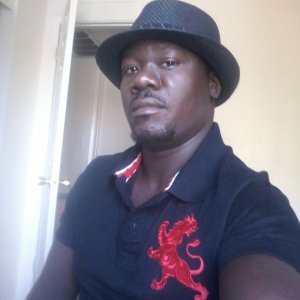The family of Alfred Okwera Olango spoke out at a press conference on Thursday following a El Cajon police shooting that left the 38-year-old dead.
Plenty of questions surround this week’s shooting death of Olango — a killing that authorities say happened after the man raised an object with his hands in a threatening “shooting stance” toward an officer.

That object, police said Wednesday, turned out to be a vaping device, though the officers didn’t know what it was at the time.
“I think his mind was just not communicating, how could he even understand anyone coming,” said Pamela Benge, Olango’s mother. “Mental breakdown is not easy to control. It needed someone who could, who was true and could just calm him down, and then take care of the situation. That’s all the call was called for, not to come and just finish his life.”
Tuesday’s shooting drew dozens of protesters to El Cajon’s police department after a woman identifying herself as the dead man’s sister alleged on a bystander’s Facebook Live stream that she had told police he was “sick” and that she asked police to help him, not shoot him.
About 50 to 75 protestors began stopping vehicles in the area on Thursday night and a motorcyclist was knocked off his motorcycle, El Cajon police said in a news release. Protestors allegedly began to through bottles and after the group did not disperse, police deployed pepper balls. Two men were arrested, police said.
The Olango family’s attorney, Daniel Gilleon, told KTLA that the incident was not a suicide by police scenario.
“I know from the very beginning, because of the way they’ve pitched this case, that they’re going to take this position of suicide by cop,” said Gilleon. “I know that, but the problem with that is that they’re doing it in an unfair way by selecting, cherrypicking a still image to portray that situation. So it’s just unfair.”
Who called police, and what was said?
Nearly 50 minutes before officers arrived and found Olango behind a restaurant, El Cajon police Chief Jeff Davis said, a woman identifying herself as his sister called to say the 38-year-old man was acting erratically. She said he was mentally ill and wasn’t armed, Davis said.
He said the caller talked about a man who was “not acting like himself” and was allegedly walking in traffic.
What exactly was said is unclear. The call or calls have not been released.
But Davis’ account comports with what a distraught woman told a bystander who was recording a video on Facebook Live on Tuesday after Olango’s shooting.
In the video — recorded by Rumbie Mubaiwa — a woman identifying herself as Olango’s sister says she called 911 to ask police to help him.
She describes him as “sick.” Officers can be seen congregating in the background as the woman sits on a rock wailing.
“You guys killed my brother in front of me,” she cries, as Mubaiwa records the scene. “Why couldn’t you guys Tase him? Why? Why? Why? Why?”
How many calls were made?
Police initially said they received three calls over those 50 minutes, though Davis later said he wasn’t sure of the number, or whether someone other than the woman called.
Davis didn’t offer an explanation for the 50-minute response time, other than it took “that long to clear officers to get out there.”
Davis said he couldn’t confirm that the woman was the man’s sister because she declined to cooperate with investigators after the shooting.
“We have a lot of questions. … We would certainly like to speak to her,” Davis said Tuesday evening.
Was the man mentally ill, as the caller claimed?
Davis said investigators don’t know whether Olango was mentally ill, as the caller claimed.
“That’s part of the investigation right now,” he said.
Asked whether there was any indication the man was under the influence of anything, he said, “Not that I’m aware of, no.”
What will videos show?
Police said videos of the shooting were recorded — but aside from a still image from one of the recordings, the footage has not been released.
Will the videos back up the officers’ accounts? El Cajon Mayor Bill Wells said the district attorney’s office would decide whether to release the videos to the public after it examines the evidence.
Police said that when they arrived, Olango refused multiple instructions to remove one of his hands from his jeans pocket. When Olango didn’t comply, according to Davis, one officer drew his gun and pointed it at him while continuing to tell him to remove his hand from his pocket. The other officer prepared a Taser.
At one point, Olango “rapidly drew an object” — later identified as the vaping device — placed both hands on it “like you would be holding a firearm” and stood in a “shooting stance,” according to police.
In response, one officer fired his gun at Olango, while a second officer simultaneously discharged his Taser, Davis said.
The still image that authorities released shows two police officers, at least one of whom appears to be aiming at a black man in jeans and a T-shirt. The man has his hands stretched out in front of his torso, as if he was aiming at something.
A witness recorded the shooting with a cell phone and voluntarily gave it to police for their investigation, Davis said. He did not say whether the still image came from this cell phone footage.
How many videos exist?
Other video exists, the chief said, without elaborating.
“Investigators are reviewing video (from the witness) and other video recovered from the scene. All video recovered so far in this investigation so far coincides with the officers’ statements,” the chief said.
KTLA’s Cindy Von Quednow contributed to this story.















